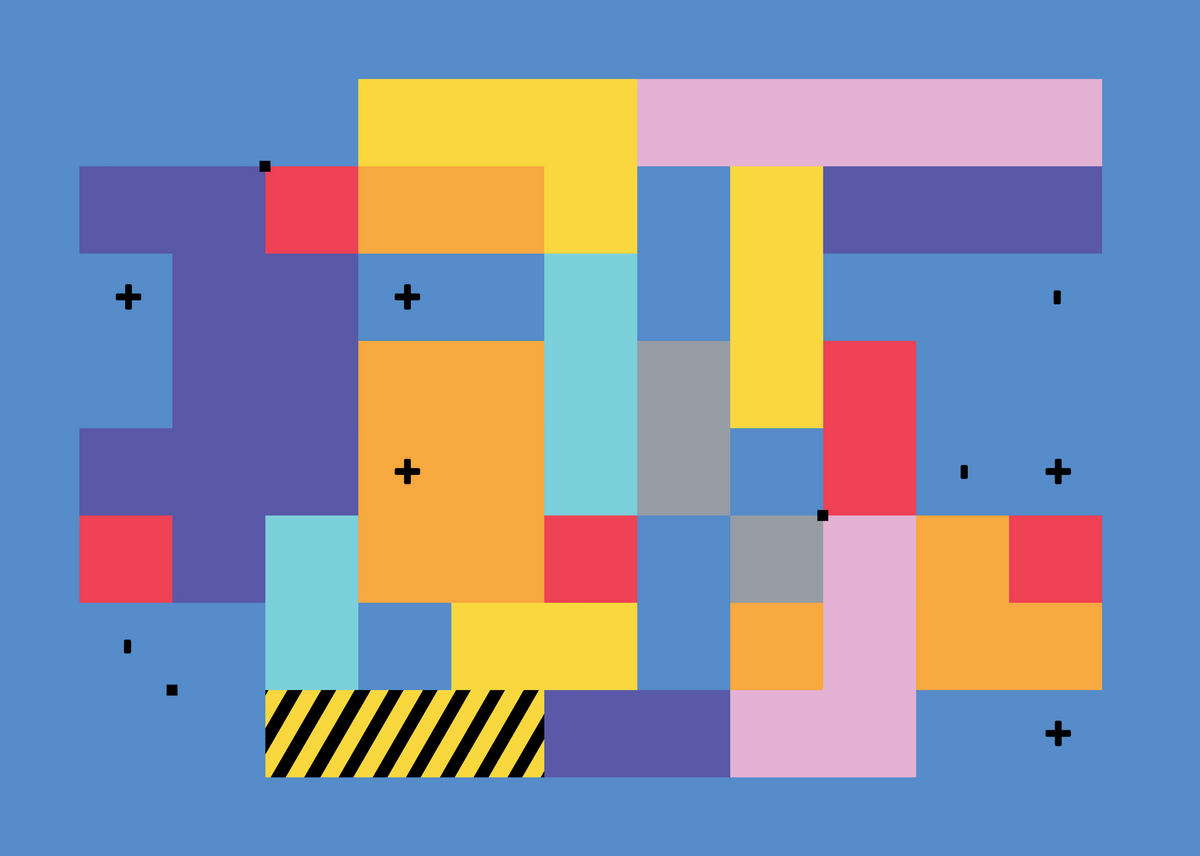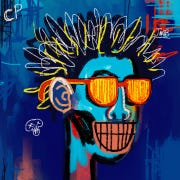Welcome back everyone 👋 And welcome to all new subscribers that signed up - thanks for signing up and joining along for the ride!
This is the weekly Gorilla Newsletter - we have a look at everything noteworthy from the past week in generative art, creative coding, tech and AI. As well as a sprinkle of my own endeavors. Enjoy!
Genart Updates
Kaloh's Podcast feat. Artnome
I'm a massive fan of Artnome and all of the things that he does in the space. I was super excited when I saw that Kaloh did a podcast episode with him. Jason Bailey has done some of the most wonderful interviews with important figures in the generative art space, like Jared Tarbell and the elusive Manolo Gamboa Naon to name a few.
In the podcast Jason Bailey tells us about his beginnings, how he got into Art from a young age, then working in tech for a while, until he later made his return with the Artnome blog and being one of the early advocates of digitally collectible art in the web3 age:

As always, fantastic work from Kaloh - looking forward to more podcast episodes.
Maya Man - I'm Feeling Lucky
Maya Man creates work that tackles the topic of identity culture on the internet - essentially how we interact with content on the internet, it's consumption or creation, and how it affects our identity on the internet.
In her latest exhibition on Verse she tackles the topic of Astrology, specifically horoscopes and how they constitute a modern belief system in the age of the internet:
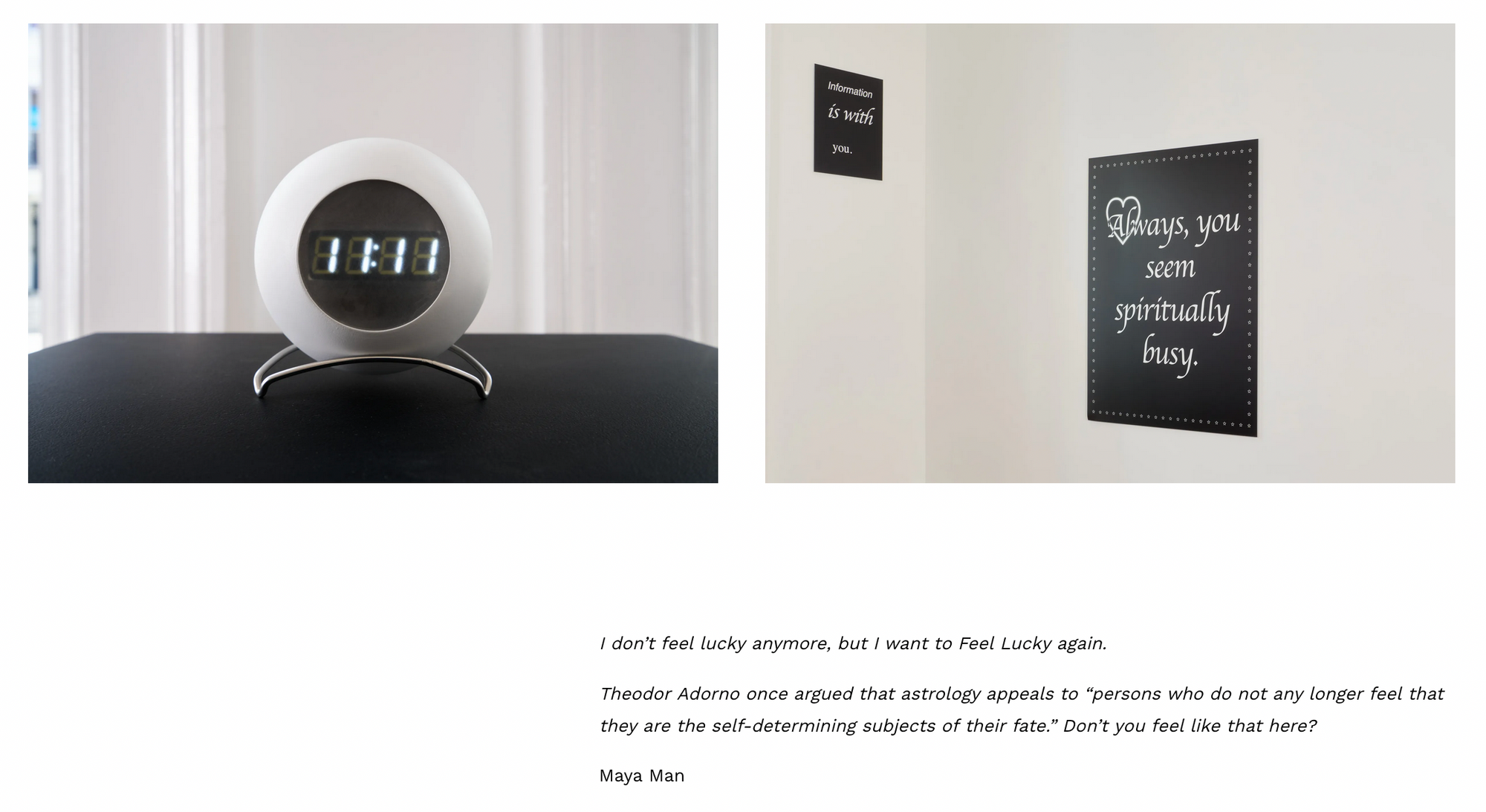
Deriving meaning from horoscopes in many ways parallels the meaning that we attribute to randomly generated outputs from generative systems. The Verse write-up is beautifully done, and gives further insight into the exhibition:
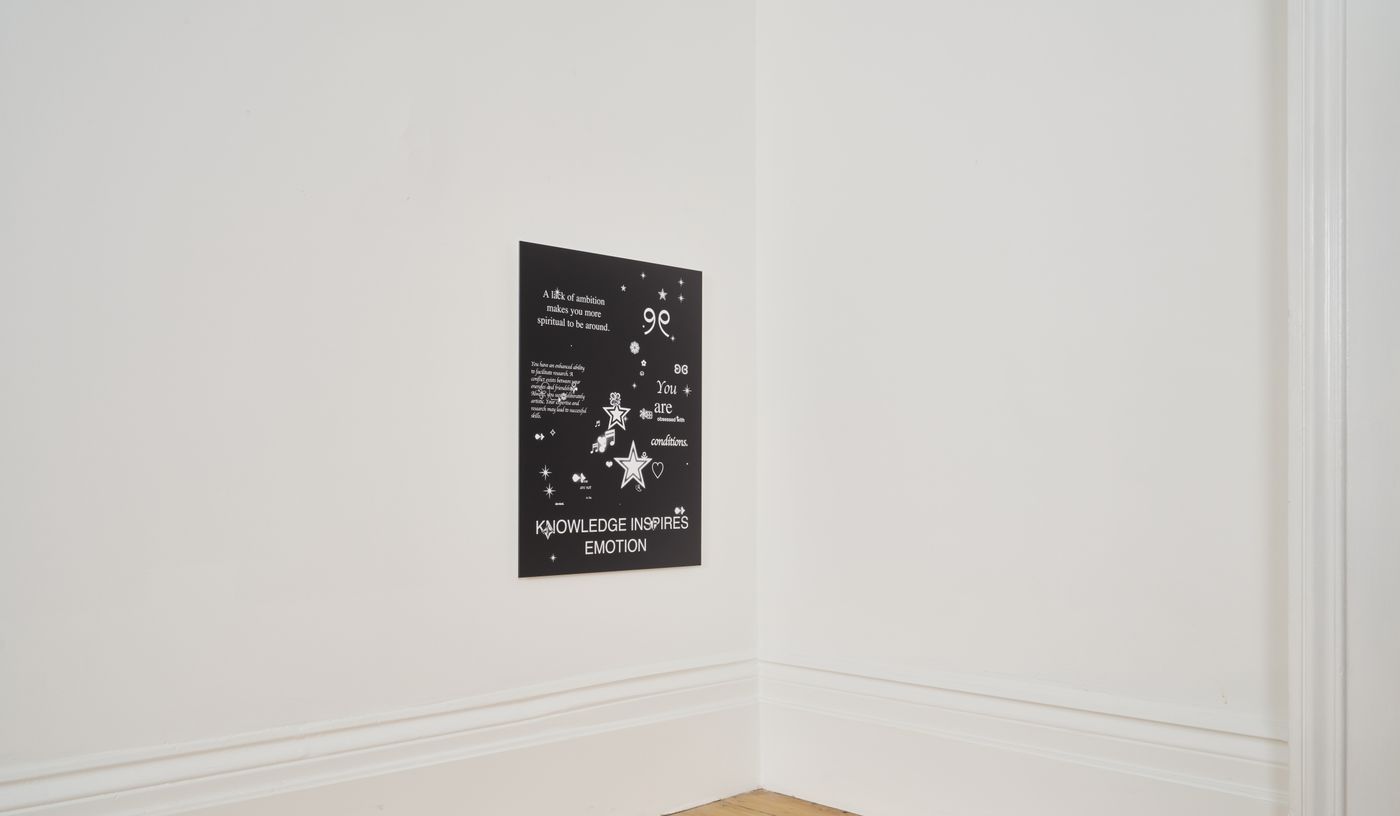
Another separate interview with Maya Man can be found here:
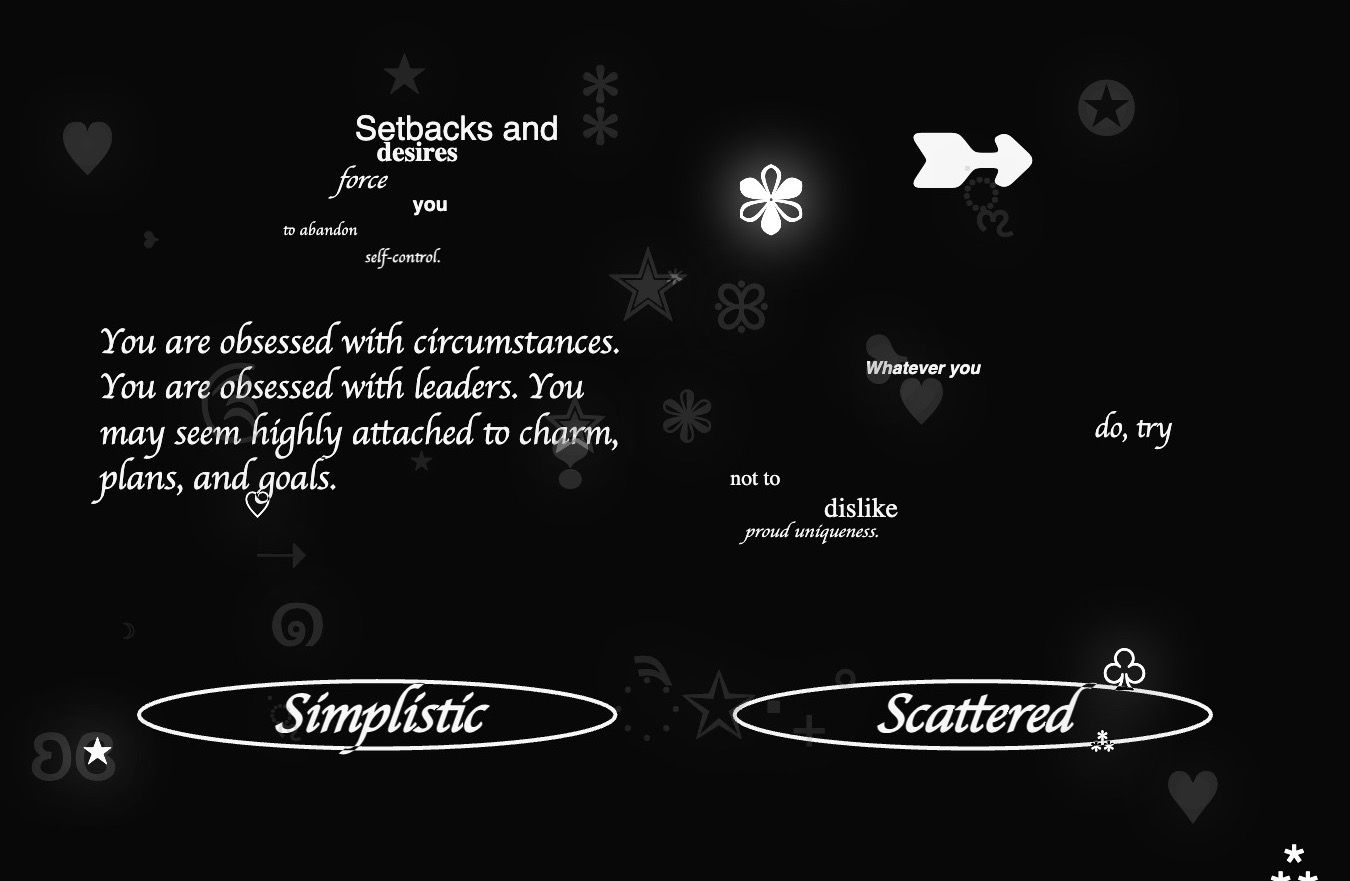
As the title suggests, Maya Man's work was inspired by Google's "I'm feeling lucky" button. This button would directly take you to the first search result corresponding to the search query you'd entered in the text box - this element of chance, in the search engine that arguably changed how the entirety of humanity functions in this day and age, sparked the idea for Maya Man's exhibition.
Maya Man on Generative Meaning by LeRandom
I actually became aware of the exhibition via Peter Bauman's interview over on LeRandom:

He goes into more detail with Maya Man, asking her about finding meaning in randomness, the religious undertones that her works have, and how she approaches her process of creating new works. Every week LeRandom blesses my timeline from anew with a stellar piece on generative art.
And if that wasn't enough the timeline also got another update, resuming where the previous portion left off in the mid 60s, now covering the latter half of that era:
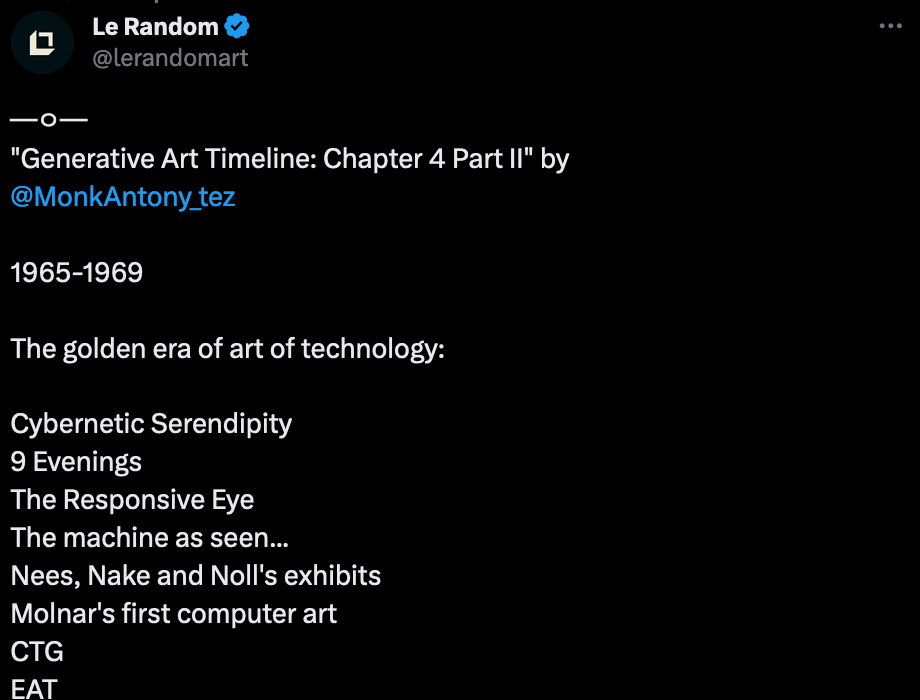
The Aesthetics of Experimental Chance in Artistic Practice
Another article that I found super interesting this week was by Paula Brailovsky, over on The Island. It's a stellar read, delving into randomness as an important component in art-making, not just in generative art but over the years in general.
Then there is the subject of this essay: experimental chance. This type of chance is not gestural, expressionist or accidental, but is rather rooted in experimentation and observation. It involves setting down a particular set of instructions and parameters and observing the results.
I never thought about it this way; that there's different kinds of randomness. Not from a technical point of view, where we'd frame randomness as different kinds of probability distributions, but with regard to their intent and in the manner that they're applied. This is maybe something that I need to be more intentional about in future works.
Eko33's Terra Incognita
Following his release "Neural Sediments" on ArtBlocks, Eko33 returns with a new collection on SuperRare titled "Terra Incognita". In the interview with Paloma Rodriguez he dives into his background, the inspiration that he draws from mid-century design, and his art practice is an attempt at bridging the gap between disparate things, be it between the modern and the old, or between art and technology:
.png#keepProtocol)
The interview is super insightful, providing a deeper look into the mind of Eko33 and how ideas rooted in cognitive science, sociology, and ethnography drive the development of his generative pieces. I find it fascinating how his works further these conversations with a modern medium.
Eko33 also made a thread in which he details the ingredients that generate the imagery seen in Terra Incognita:
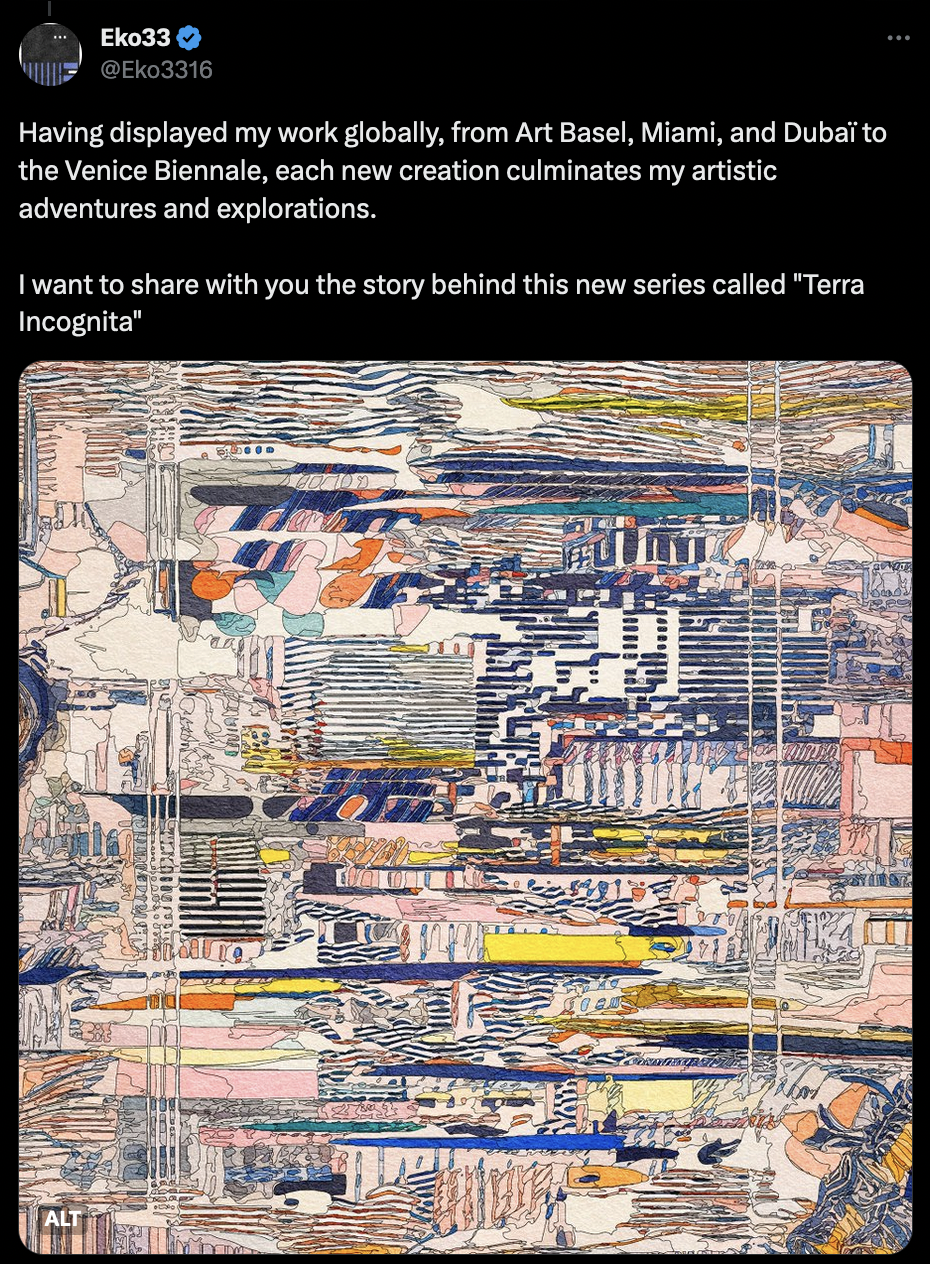
William Mapan's Process
Following last week's spotlight where we had a look at William Mapan's process, in an interview with Cactoid Labs for the new work that he's creating for LACMA - this week Mapan gives us a little behind the scenes showing us how the different layers in his artwork build up to the final output:
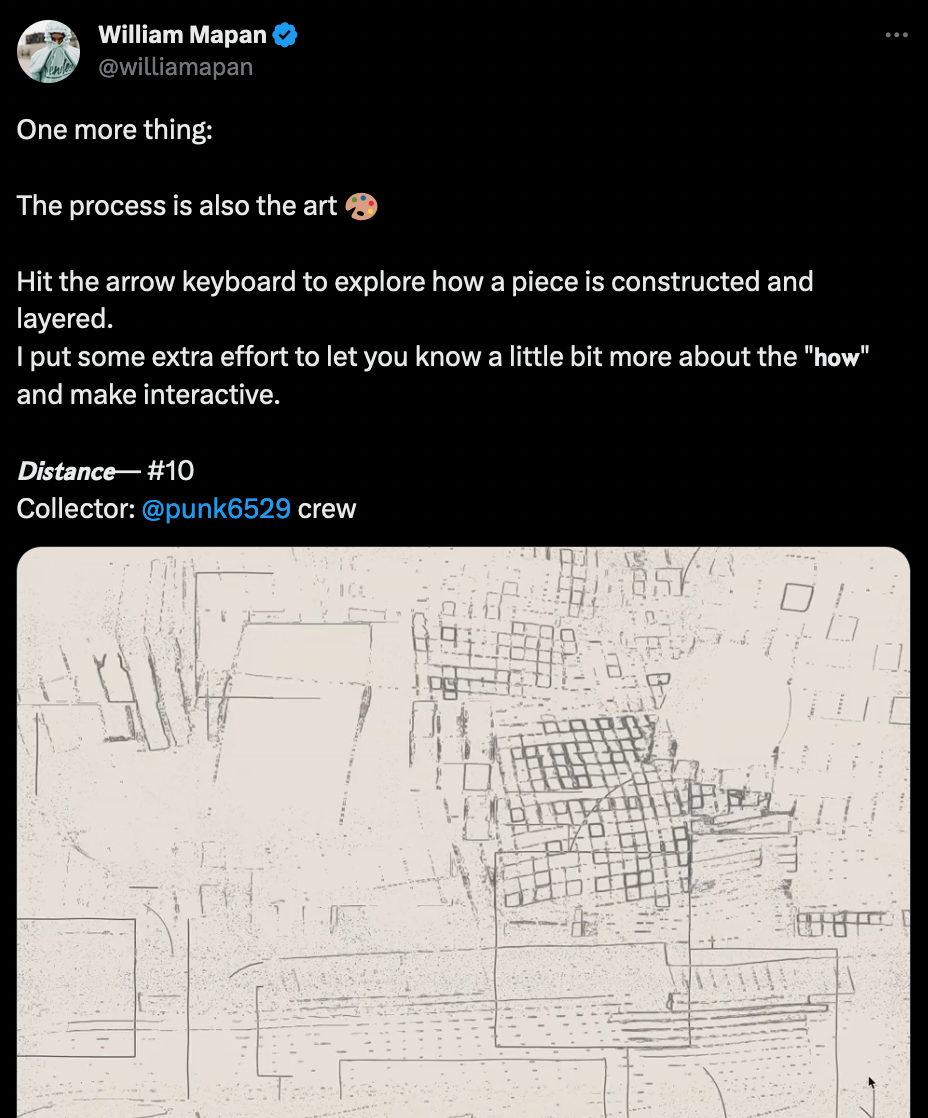
Unity Controversy
I think this issue deserves a section of it's own. Earlier this year we've seen platforms like Twitter and Reddit make drastic changes to their business/pricing models - leading to some severe responses from their user-bases. Last week, Unity followed suit and updated their pricing model as well, ensuing a massive backlash from the entire gaming industry.
Starting from the top, the problem begins with this announcement from Unity:
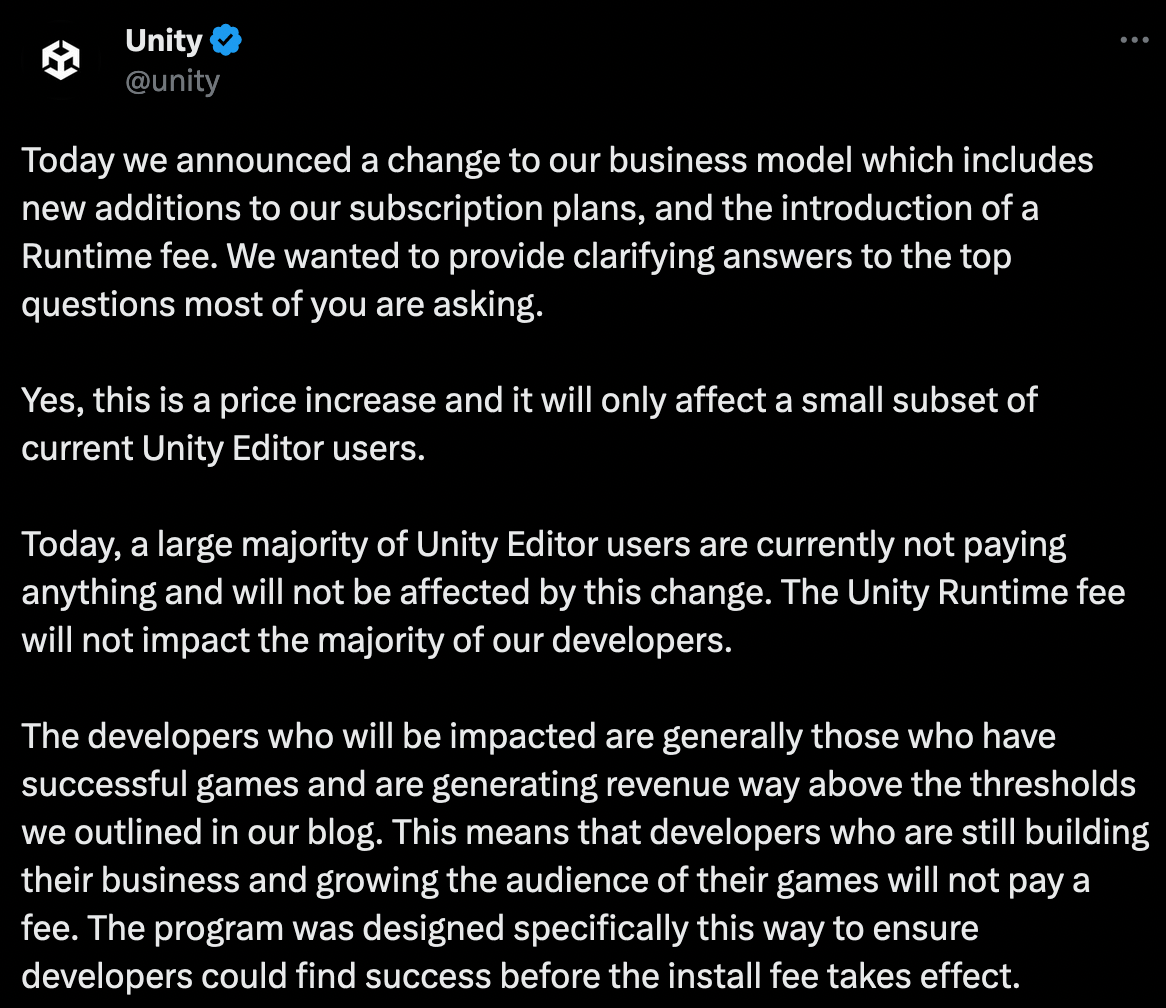
The post in which they detail all of their changes.
Essentially, Unity is introducing a run-time fee based on each individual install of games that make use of the unity run-time. The unity run-time being the software that gets packaged alongside games built with unity and lets them run on the user's device. This fee is only applied to games that exceed a specific threshold number of installs and revenue generated:

Depending on the Unity plan that you're subscribed to a different run-time fee will be applied:
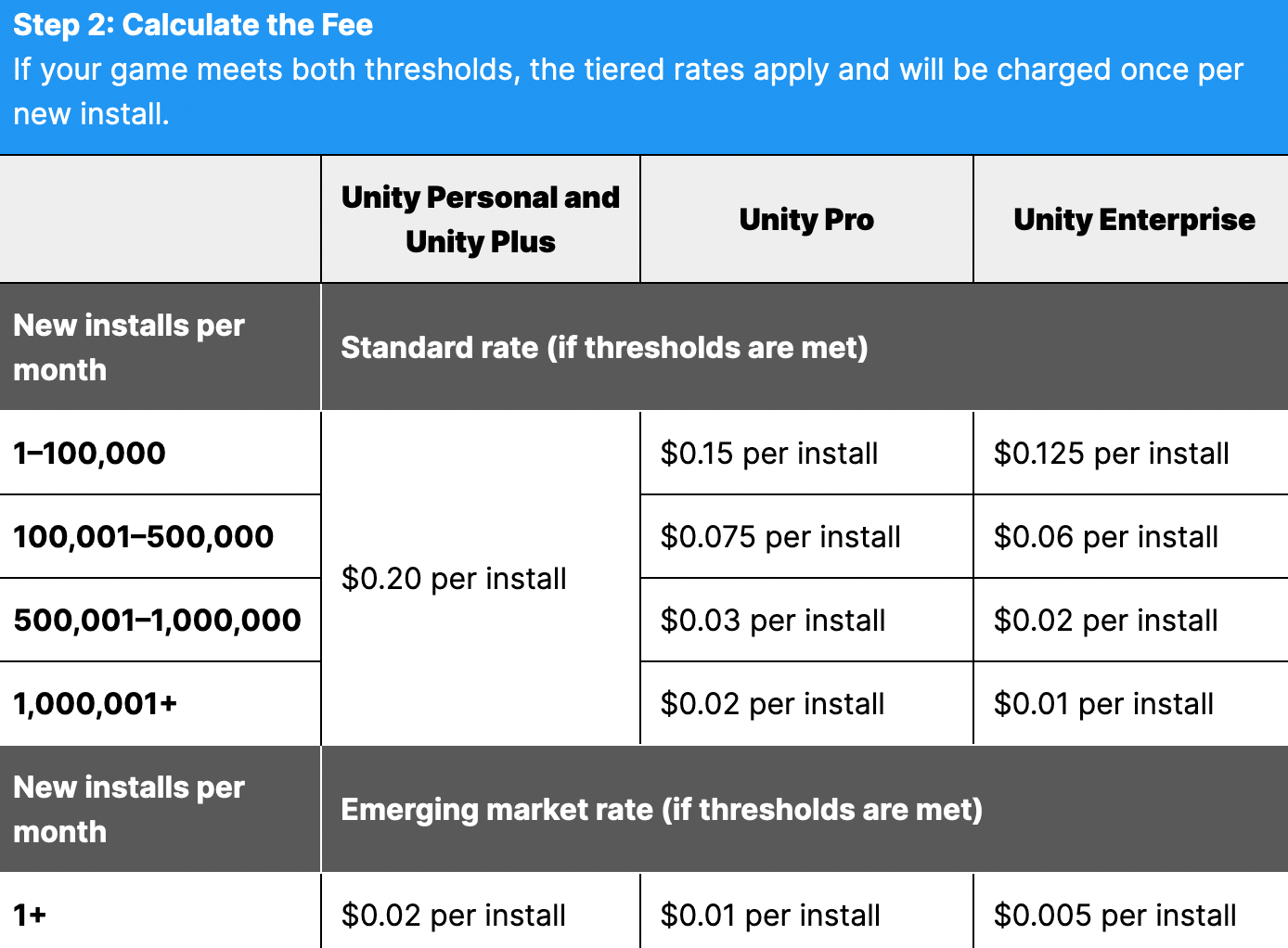
Now that already brings up an interesting set of problems. For instance, malicious actors could simply keep reinstalling a game multiple times over and in that manner accrue charges for the developers. Unity argues that they already have a fraud-detection system in place to counteract this. They also state that they have means to detected pirated copies of games using the unity run-time.
Chaos ensues. At first glance this might not seem like such a bad thing, what's 20 cents after all? But in reality it's actually a significant chunk of money once a a studio hits $200,000 - which is roughly the wage of 2-3 devs not considering other costs. Besides this, it's also a betrayal of trust: Unity shows that they can simply change their contract and enforce devs to pay for the games that they've built with their engine. Just like building a castle on sand, a lot of trust for Unity has been lost over the past couple of days.
But this is only the tip of the ice-berg, there's been a lot of things happenings behind the scenes that have come to light that added fuel to the fire. Such as controversy around some members of Unity's board of directors selling large shares of their Unity stock just days prior to this announcement.
Frey Holmier which you might be familiar with, being an employee at Unity has been very outspoken about the changes and succinctly summarizes the issues at hand:
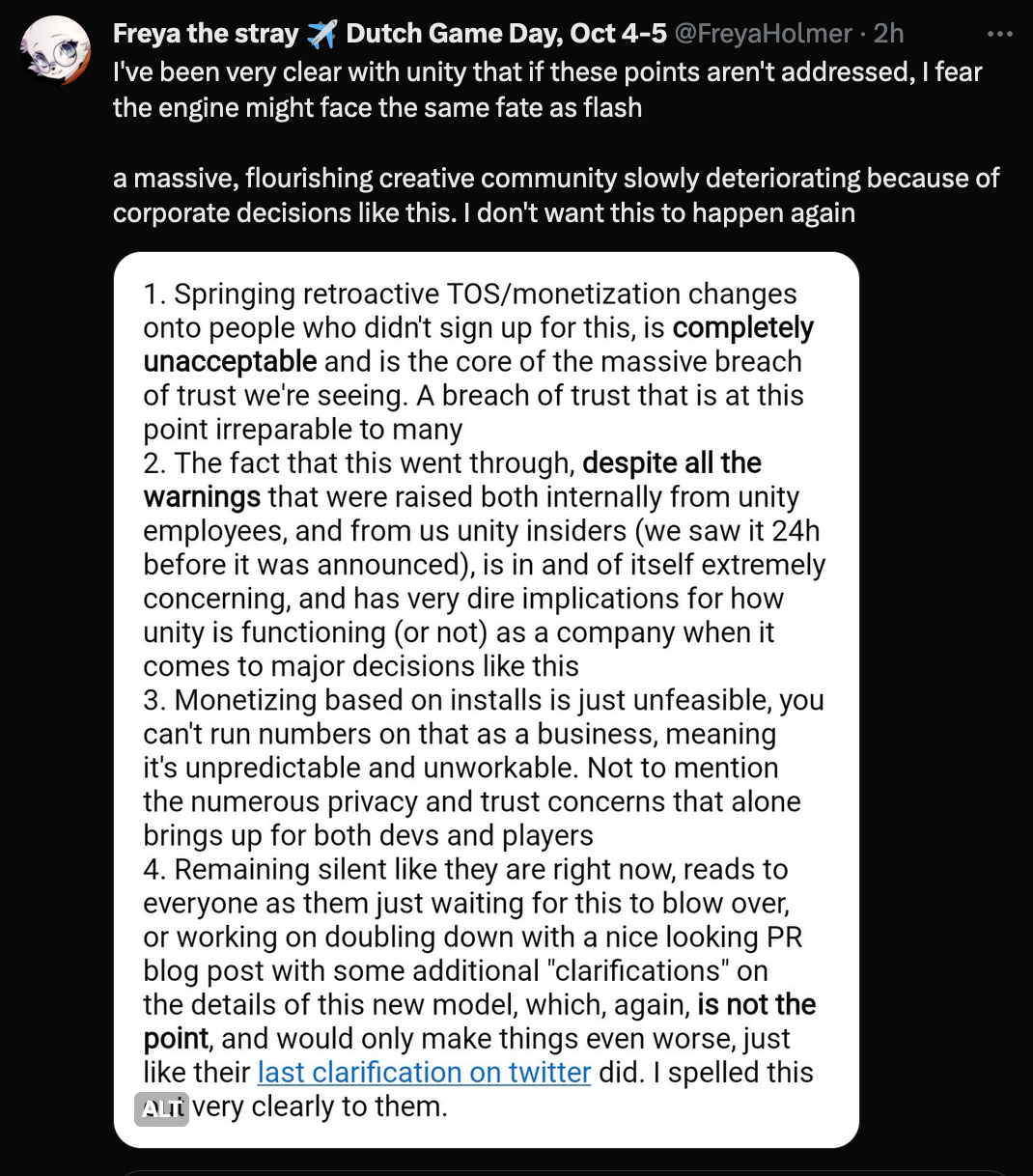
The latest update on this issue was Unity issuing an apology just a couple of hours ago:
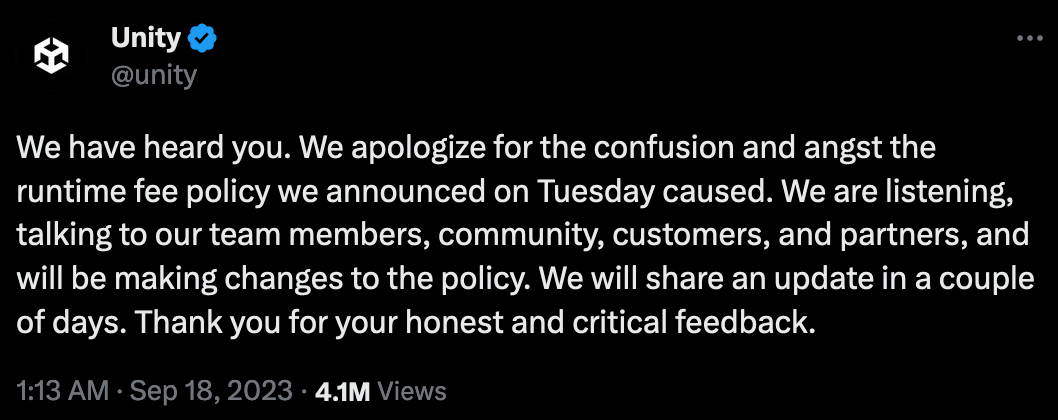
It's a rare occurrence to see large companies seemingly implode over the short course of a couple of days due to questionable business decisions, simply because of corporate greed, but this one takes the cake. It's uncertain if Unity can recover it's reputation after this.
Interesting Reads
Typescript Drama
Besides the Unity problem, there's also been to a lesser extent some controversy around Typerscript. Last week, Turbo 8 announced that they would be dropping Typescript in favor of Javascript:
What is Turbo? Why are they dropping Typescript? And why did this upset the community. Turbo is a popular framework that reduces the amount of custom JS that needs to be written for webpages of all kind:
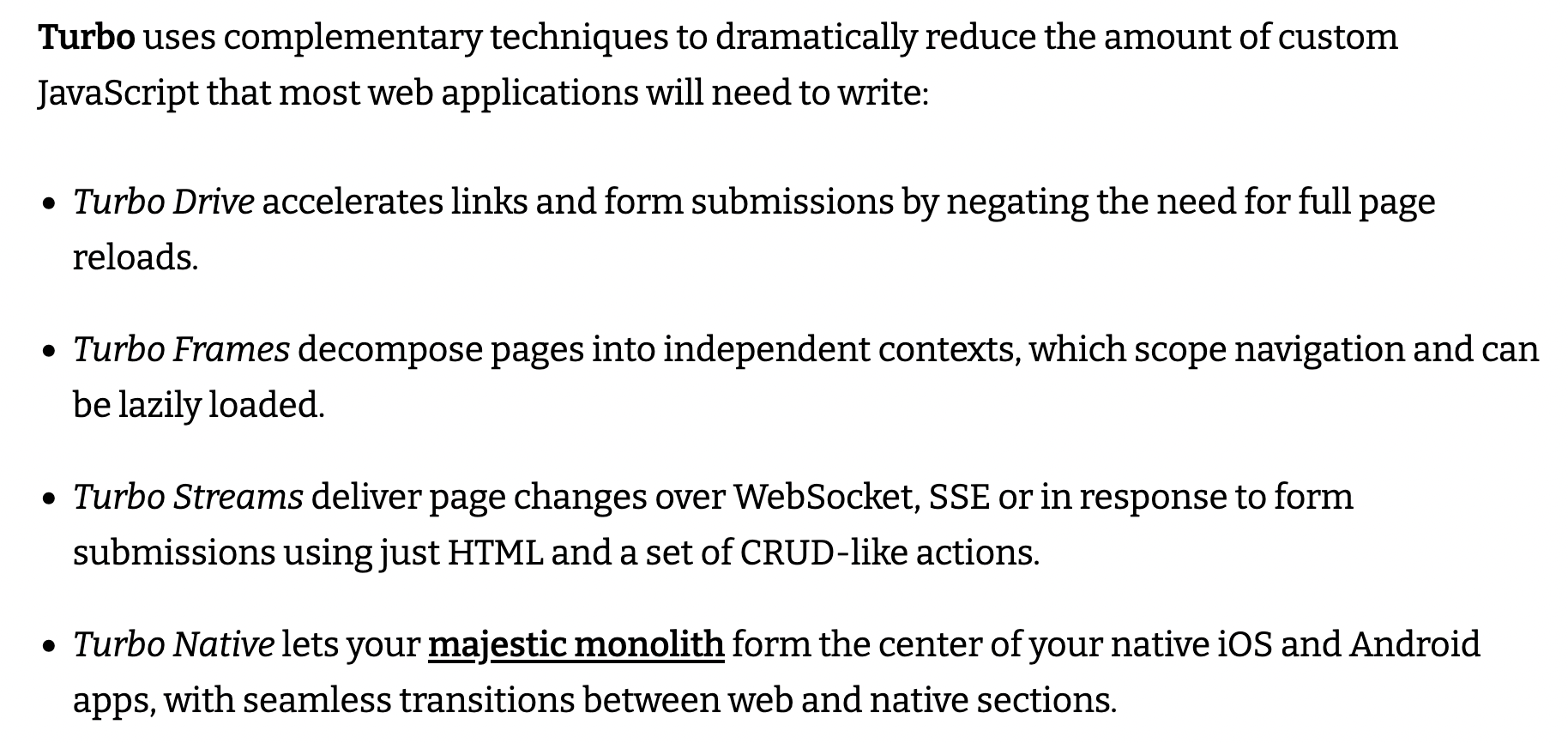
It's creator stated that Typescript will be remove because it:
pollutes the code with type gymnastics that add ever so little joy to my development experience, and quite frequently considerable grief. Things that should be easy become hard.
This lead to some backlash from the community, where many feared that this sudden change would break a lot of the packages that rely on Turbo:

Some articles were written in defense of typescript, astating it's importance and what it's benefits are:
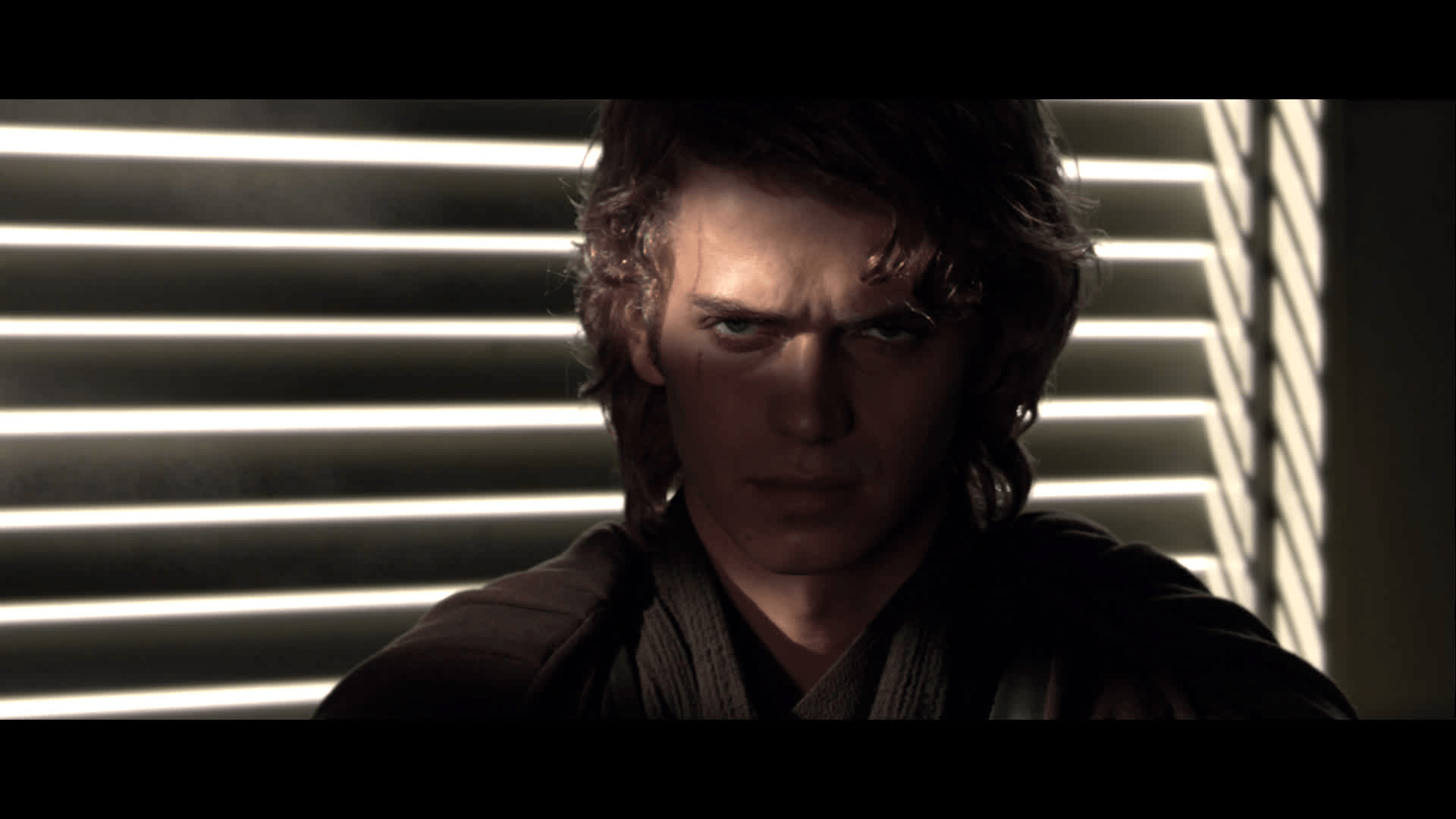
I'm far removed from the world of Typescript - but I found this interesting nonetheless.
lodash Issue Bankcruptcy
What happens when your opensource github repo has way too many open issues? You declare bankcruptcy:

And that's excatly what the popular lodash utility library did this past week - closing several hundreds of open issues. And that's maybe not so bad after all and makes room for future improvements that matter rather than chasing loose ends that hinder meaningful progress:
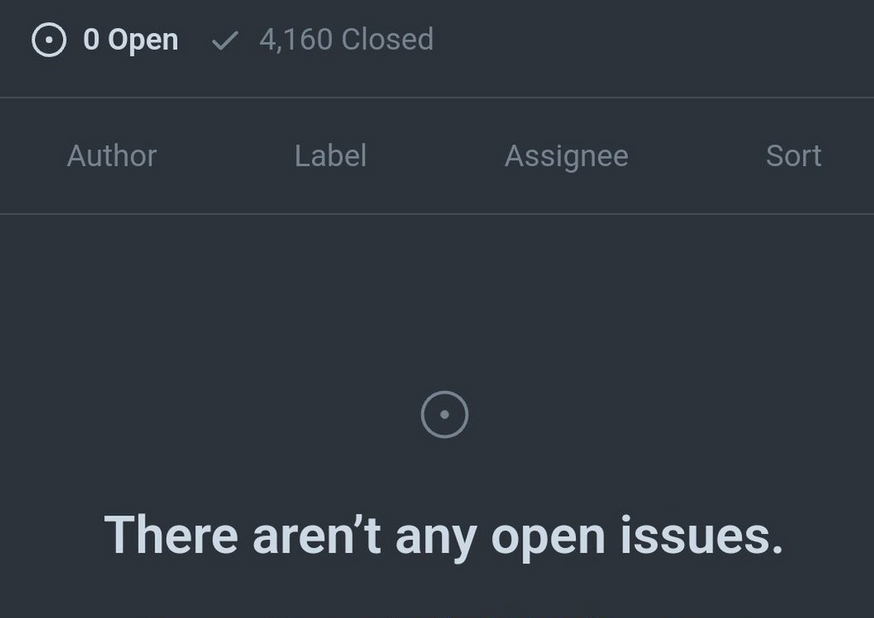
Kyle McDonald's Amends project
It's already been one year since the Ethereum merge, however the impact that the blockchain has had on the environment still remains to be addressed. A year ago, media artist Kyle McDonald create his project amends.eco in an attempt to alleviate this issue - however a year later it still remains to be sold:

The bug that caused the UK air traffic meltdown
Here's something completely different, but nonetheless super interesting. James Hayden does a deep dive into the bug that cause one of the largest air traffic outage in over a decade - leading to the cancellation of over a 2000 flights.
It's a very technical read, but very enjoyable at the same time:
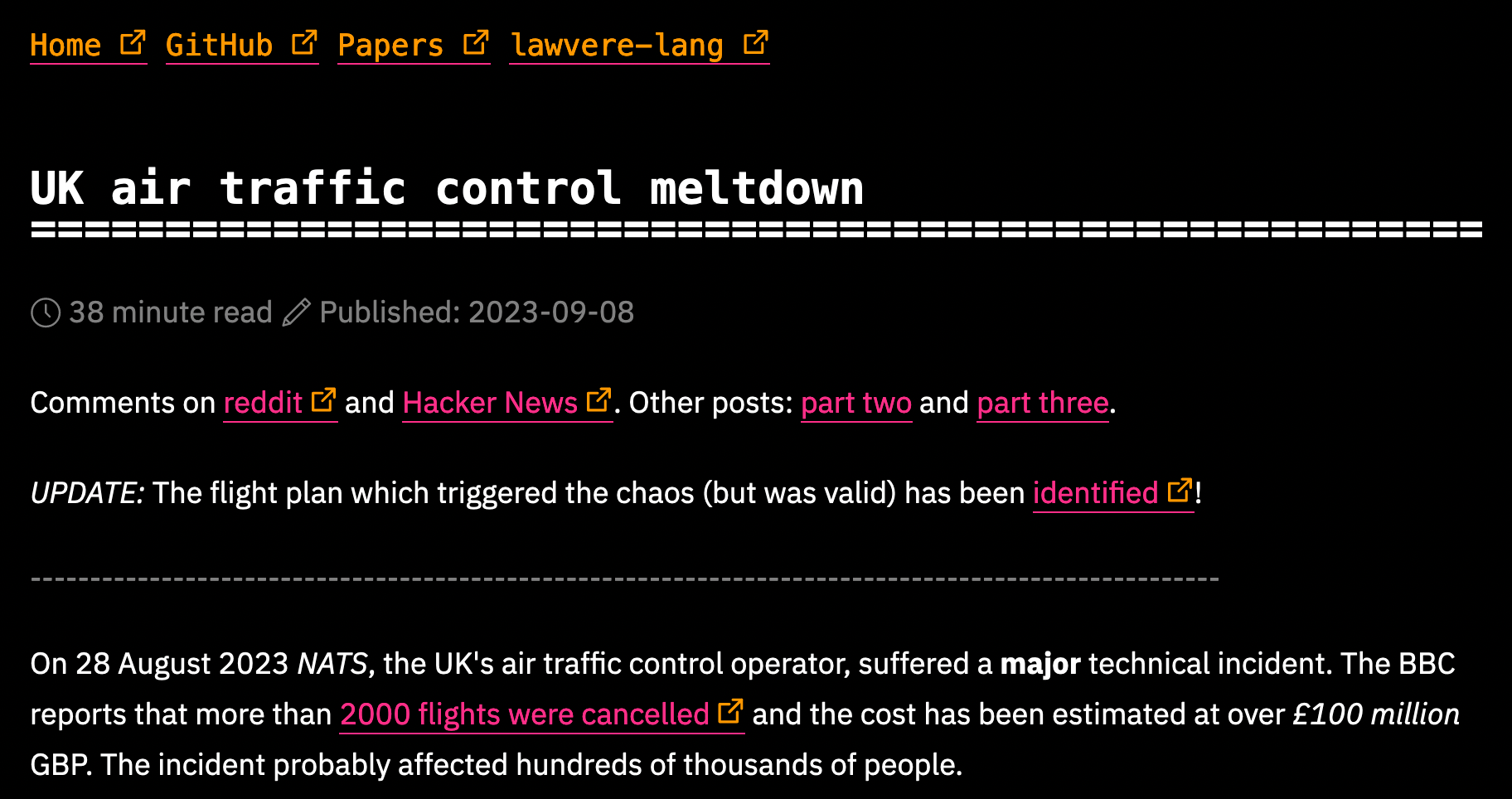
AI Corner
Optical Illusions
A couple of days ago my timeline was full of these cool AI generated optical illusions:
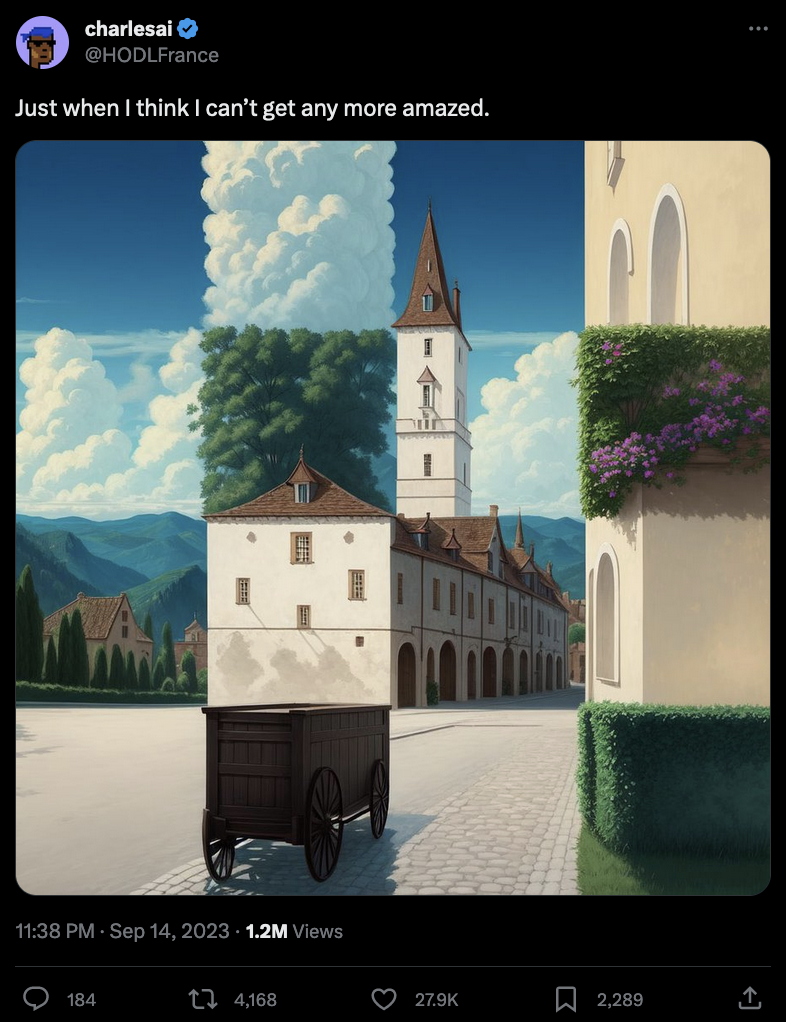
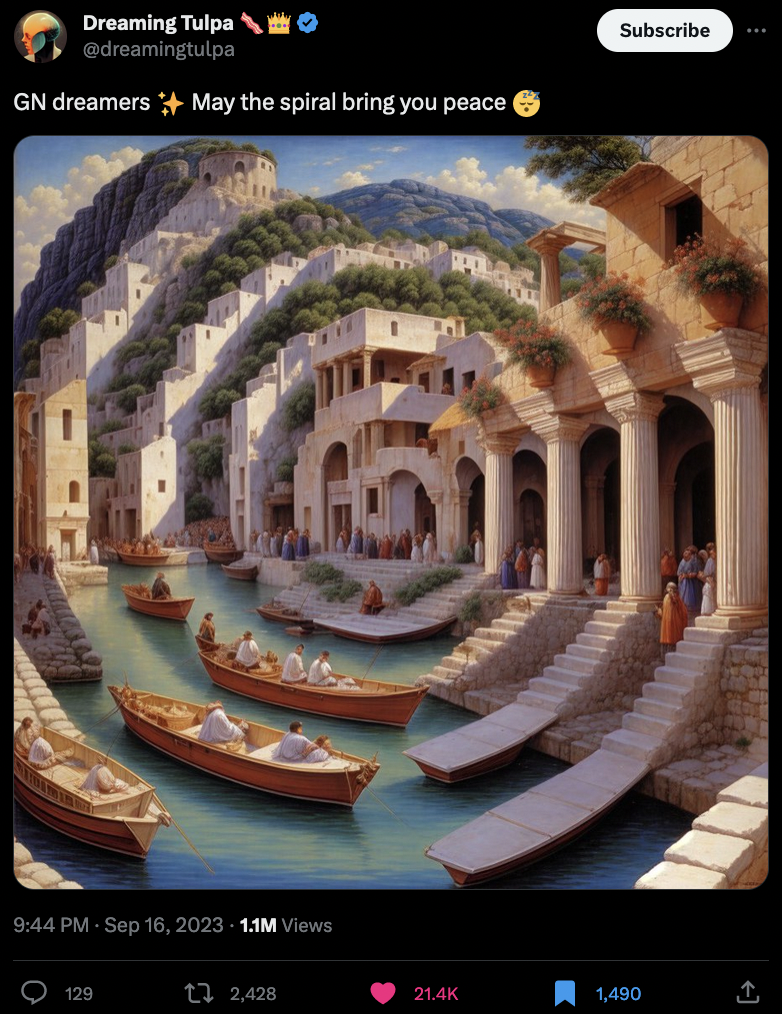
My initial guess was that it's some sort of spiral/checkerboard pattern being fed into a generative image model, and it seems that that is in fact so:
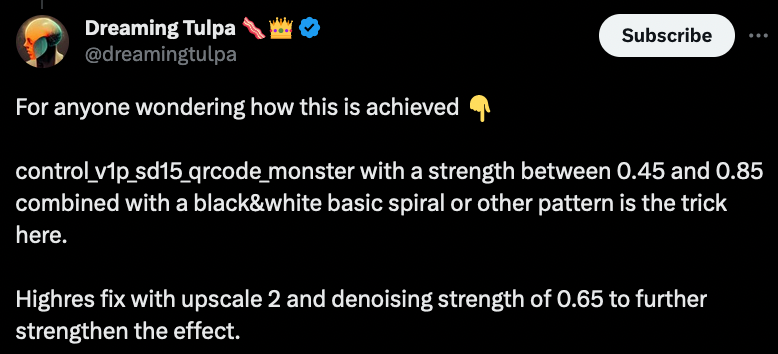
I might experiment with it this week - visually, it's one the coolest thing I've seen in a while in the AI art space!
Gorilla Updates
I actually managed to make quite a bit of art this week and also work some more on the new design of the blog - but it turns out that it's taking more time than anticipated.
Saturday morning I returned to my irregular grids just to get the creative juices flowing. Layering two instances, I somehow ended up with this composition that I think turned out really nice - there's something very childish and playful about it, like it's made of lego blocks:
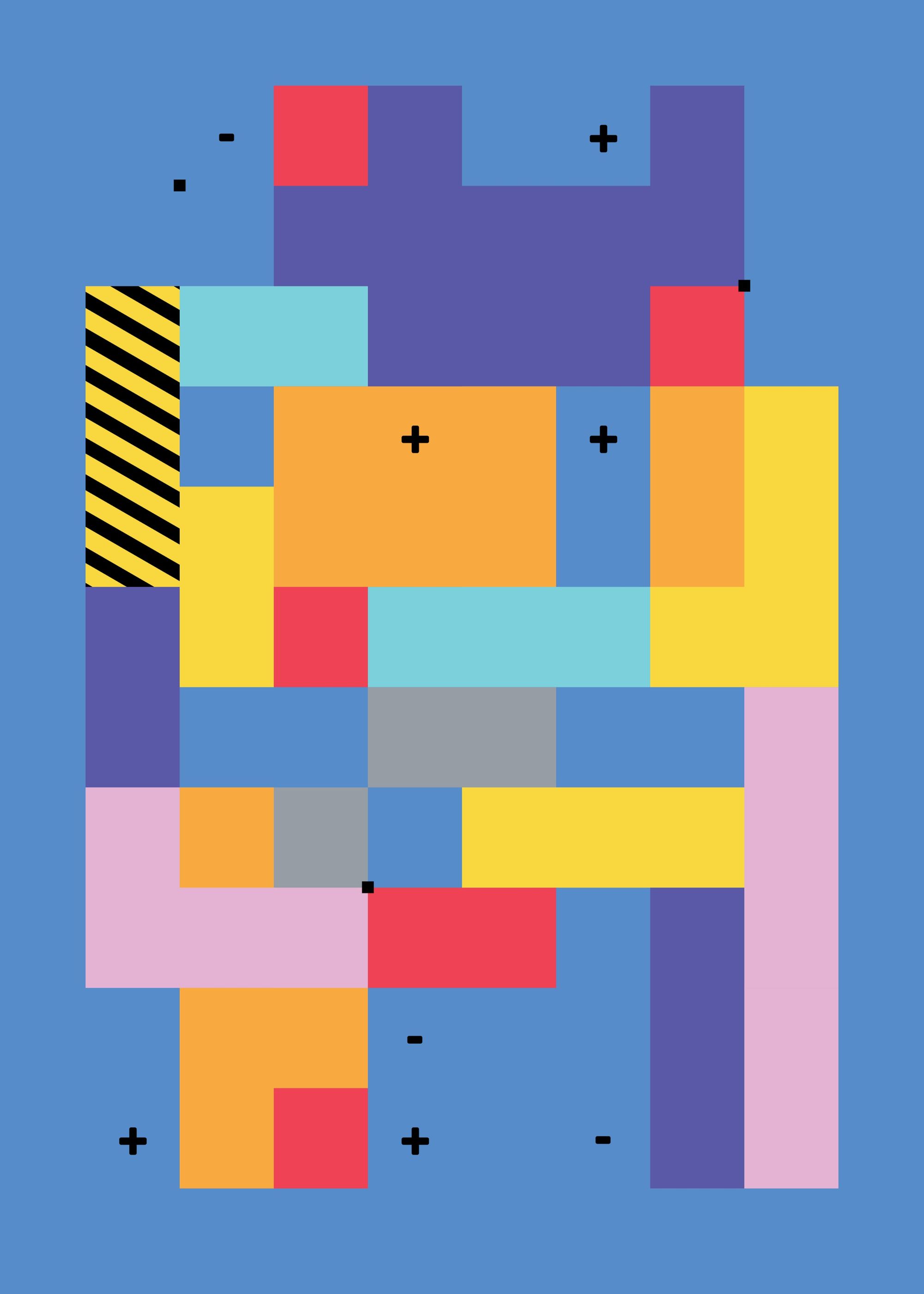
I have some ideas for taking this further, with some animated elements but that's entirely dependent on how much time I can invest this week in sketching.
Earlier this week I spent some time exploring maze generation algorithms, such Prim's algorithm and Recursive backtracking that generate completely different patterns. I also learned about the River Factor, and how it determines the overall shape of a maze. A low river factor indicates many short dead ends, giving the maze a rather spikey appearance, whereas a high river factor leads to mazes that have long corridors and few short dead ends - example:
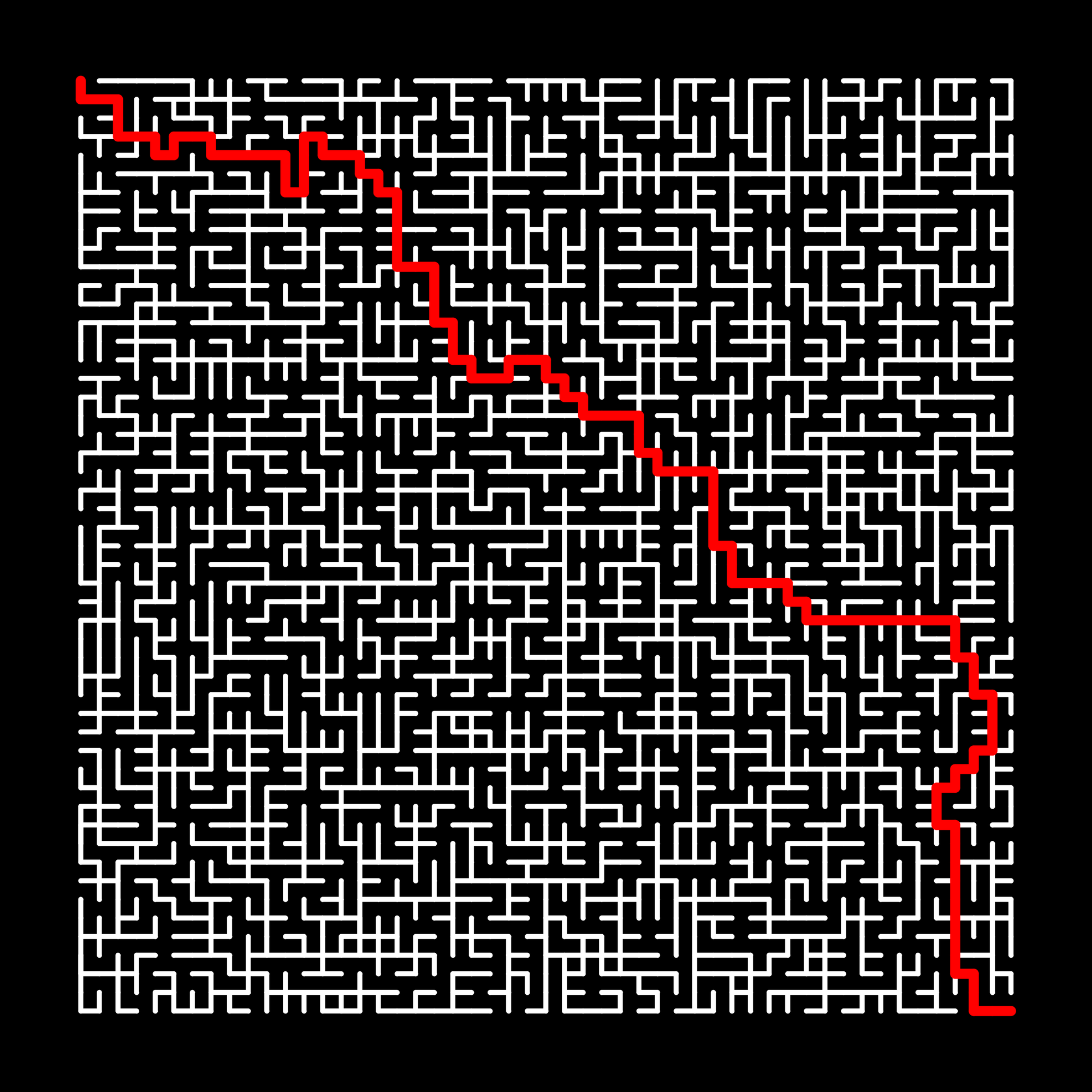
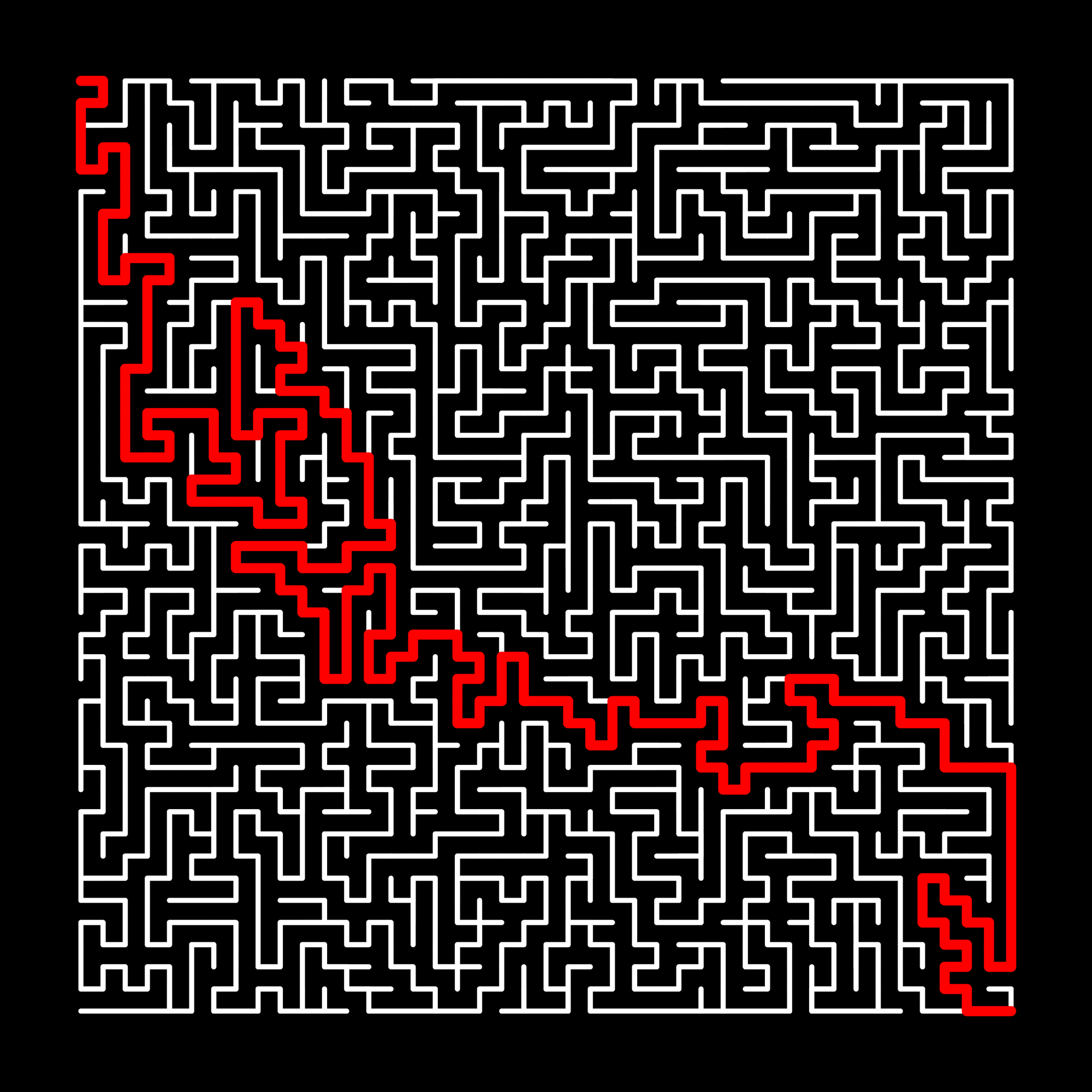
Spikey Maze generated with Prim's algorithm vs. longer and winding corridors with recursive backtracking
I also did some circular sketchbook-looking sketches with arcs that I thought were interesting - they remind me of Aleksandra Jovanic's work in a way:


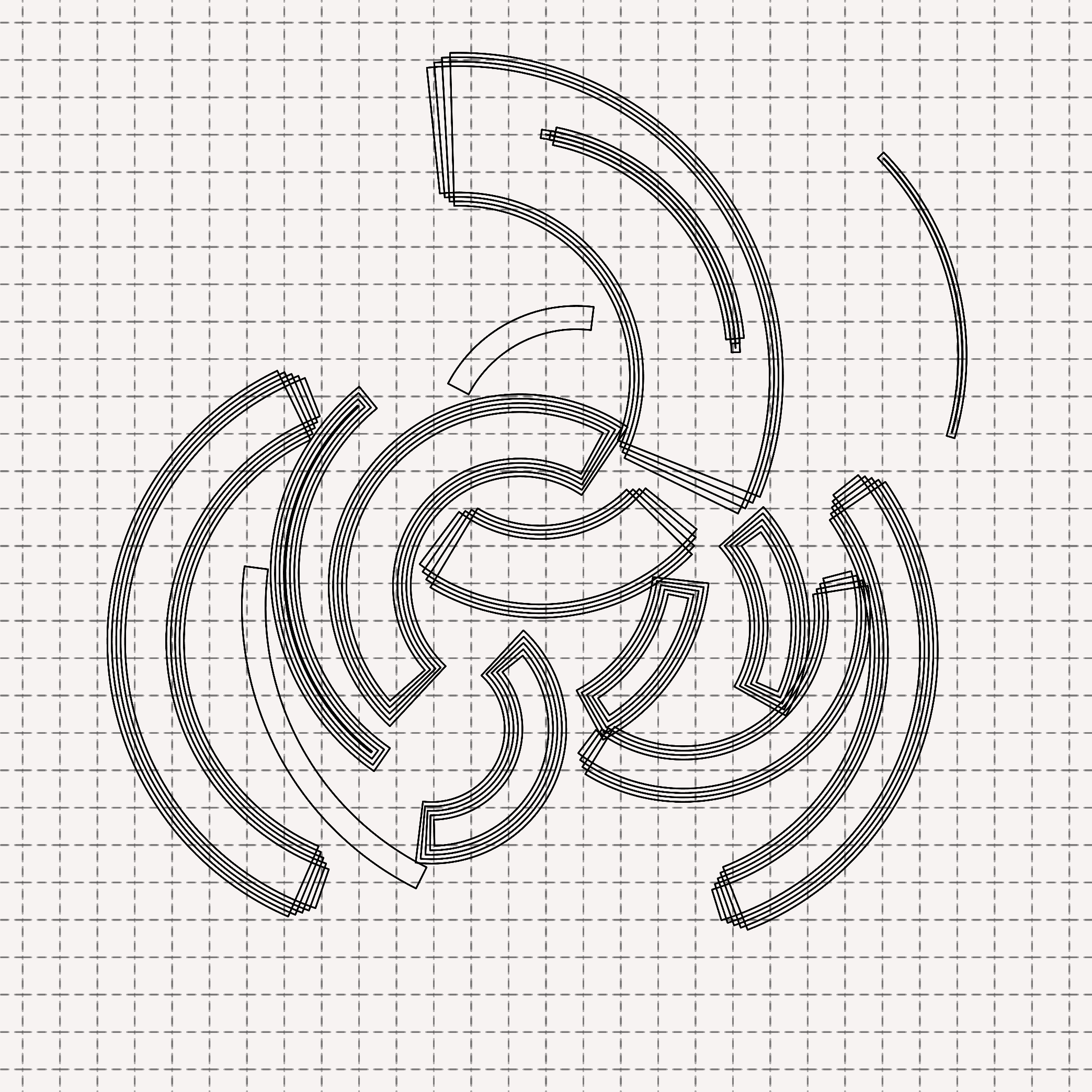
Jumbled Arcs
And I worked a tiny bit on my other project that's been on hiatus for a while now:
A glimpse into the core
Music for Coding
Laura Lee and Mark Speer were planning to fly to Latin America, but when the right visa didn’t come through, and the airline gave them 24 hours to rebook their trip, they hastily switched to Thailand. On their trip through Bangkok, Cha-am, and Chiang Mai, the future bassist and guitarist for Khruangbin became enamored with what they called “noodle house music”
Khruagbin mixes retro soul sounds, with flavors of surf, and psychedelic elements - all that with with some traditional Thai undertones, it's good vibes through and through:
And that's it from me this week again, hope this caught you up a little bit with the events in the world of tech, AI and generative art of the past week!
If you enjoyed it, consider sharing it with followers, friends and family on your socials, that share interest in this nerdy stuff. Otherwise, consider signing up to get notified whenever there's new content on the blog. Cheers and happy sketching ~ Gorilla Sun 🌸
